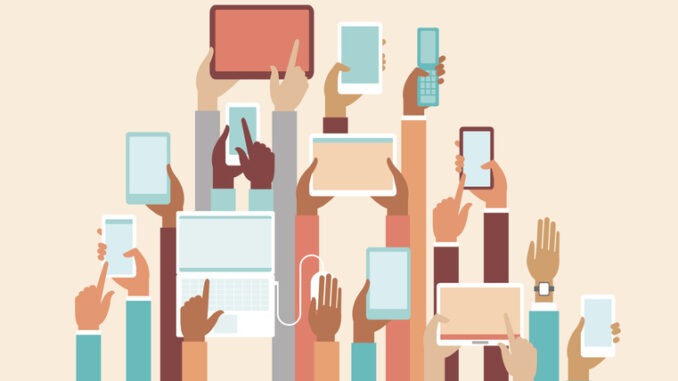
The emergence of touch devices has the potential to transform the modern classroom; Mark Anderson explores
CREDIT: This is an edited version of an article that originally appeared on ICT Evangelists
There are lots of reasons why touch devices have been popular and successful as learning devices in the classroom.
Benefits
The functionality and responsiveness of touch devices have meant that whether you’re a teacher working with our youngest learners or in the later years of formal education, you can literally have the world at your fingertips.
The ability to write on them with low latency – so it feels natural, like you’re using a pen and paper – is a great asset. The quick response times to your touch when choosing options, and the super-high resolution on the screens which means everything you view appears beautifully and in sharp, laser focus, are also attractive features.
We know how important closing the feedback loop quickly is to learning, and functionality such as casting (the ability to share your screen onto a device, or have another device share onto yours) means working collaboratively – learning and sharing together so you can have those powerful peer conversations about misconceptions – has never been easier.
The responsiveness of the device, and the tools you have on it, mean that class resources you’ve generated during the course of a lesson can quickly be shared to cloud services such as Google Drive or OneDrive – you can even quickly share these via a QR code for your learners to access on their devices to access them for spaced and retrieval practice at a later date with the touch of a button on the display.
Why is touch important?
Touch is an integral part of the successful use of digital technologies in the classroom. We expect it from our handheld or laptop form-factor devices, so we should also expect similar functionality, ease of use and efficiency options from the other surfaces upon which we learn and interact.
Technology is at a point now where we should no longer have to worry about it working; we need to now support colleagues with their ongoing professional learning in the ways the technology can be used, share the best ways they can promote learning – such as through pupil practice, explanations and modelling or formative assessment – and provide support for the infrastructure to make it work and see the returns on our investment.
Touch is one of the cornerstones of our six senses – it is the first of these to develop in a human foetus and is important for sensory perception. As children, we use touch to learn about the world around us. It is the one sense that you just can’t turn off; you can close your eyes and imagine what it would be like to be blind, close off your ears, close your nose – you can’t turn off touch.
Touch enables us to make connections that would otherwise be difficult and, as such, devices that facilitate that responsive and tactile approach to their use, make for better connections.
When it comes to thinking about what you’ll next be looking at in your classroom to support teaching and learning, make sure that touch – and that ability to interact, connect and collaborate with the technology – is baked-in to the very heart of what you’re using.


Be the first to comment